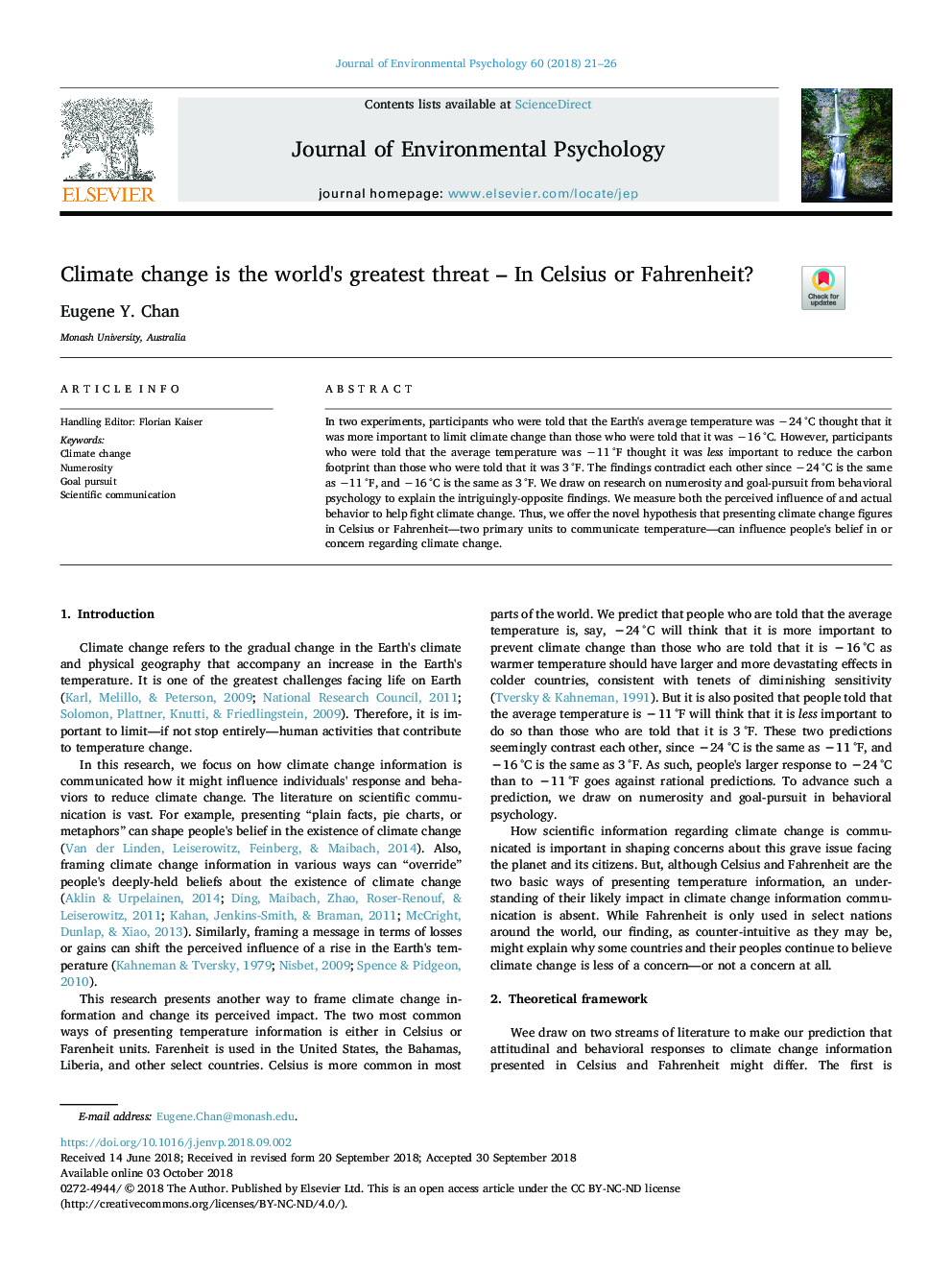| Article ID | Journal | Published Year | Pages | File Type |
|---|---|---|---|---|
| 11020624 | Journal of Environmental Psychology | 2018 | 6 Pages |
Abstract
In two experiments, participants who were told that the Earth's average temperature was â24â¯Â°C thought that it was more important to limit climate change than those who were told that it was â16â¯Â°C. However, participants who were told that the average temperature was â11â¯Â°F thought it was less important to reduce the carbon footprint than those who were told that it was 3â¯Â°F. The findings contradict each other since â24â¯Â°C is the same as â11â¯Â°F, and â16â¯Â°C is the same as 3â¯Â°F. We draw on research on numerosity and goal-pursuit from behavioral psychology to explain the intriguingly-opposite findings. We measure both the perceived influence of and actual behavior to help fight climate change. Thus, we offer the novel hypothesis that presenting climate change figures in Celsius or Fahrenheit-two primary units to communicate temperature-can influence people's belief in or concern regarding climate change.
Related Topics
Social Sciences and Humanities
Psychology
Applied Psychology
Authors
Eugene Y. Chan,
